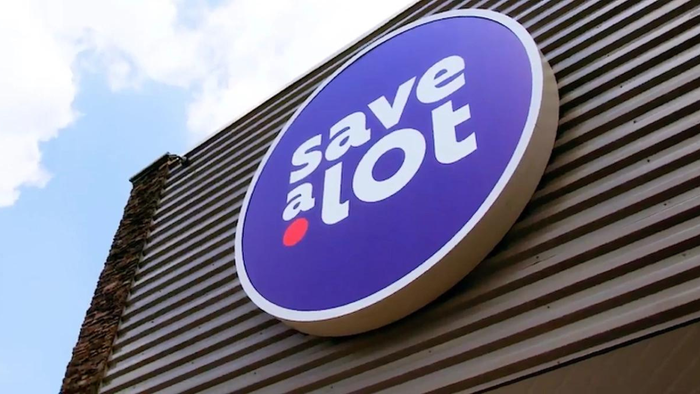Ready for their close-up
January 1, 2018
Leafy greens, berries and other gems from California fill the produce aisles all year long. By Nina Amir Nearly every supermarket in the U.S. carries California produce throughout the year, but shoppers often wander the produce aisle unaware of the origins of the lettuce, spinach, berries, grapes and other items they pick up for salads or snacks. Many consumers assume that the strawberries they buy in winter, for example, come from another part of the world when, in fact, they just come from another part of the country. Retailers need to do more to draw attention to the bountiful and profitable crops from the Golden State, according to industry executives. “Keen retailers look to present their customers with the widest variety and highest quality available and this is where California shines,” says Mike Aiton, director of marketing for Coachella, Calif.-based Prime Time International, a producer of fresh colored peppers. “Bigger, better, more flavorful [produce] and consistent availability make California products the cornerstone of any produce department.” California produce equals 12.8% of total produce grown in the U.S., according to Gordon Robertson, vice president of sales and marketing for Bakersfield, Calif.-based Sun World International, LLC, a grower of grapes, apricots and plums. “And we have a number of products that cannot be found anywhere else in our country,” he says. “In the domestic seasons, California-grown products are significant drivers of consumer traffic. This helps retail customers define and differentiate themselves in the marketplace.” Take a look at the leafy greens section of a grocery store, for example. California provides 80% of the nation’s head and leafy lettuce as well as 72% of the fresh spinach consumed in the U.S., according to April Ward, communications director for Sacramento, Calif.-based California Leafy Greens Marketing Agreement (LGMA). “California is an ideal supplier with year-round growing regions,” she says. The high quality of these items drives profits, says, Dan Crowley, sales manager for Watsonville, Calif.-based Well-Pict Berries. “The high-profit end of the grocery story is the produce section,” he says. “The majority of the produce in the national grocery stores comes from the state of California. We are good at what we do out here. We have all the elements—good soil, good water, good climate—necessary to grow good crops. You don’t get that in other areas of the country, and, if you do, you don’t get it for long amounts of time.” Efficient infrastructure Supermarkets in many areas of the country have tried to focus on “locally grown” produce, stocking these items rather than California-grown items. Industry observers say that California produce remains superior despite the fact that it may have to travel a bit farther in come cases. In addition, California growers and shippers have invested in a highly efficient infrastructure that allows them to get products on trucks that leave daily and deliver across the country, says Rick Antle, president of Tanimura and Antle, a leafy greens grower/shipper based in Salinas, Calif. “You have the cooling technology that’s required to give the product the premium-quality extended shelf life that we haven’t experienced in the homegrown produce areas,” he says. Industry executives point to the quick and efficient distribution network as a key advantage for California growers. “The ability to sell fresh, great-tasting product at a good value leads to driving consumer take away and retaining shoppers through the season,” says Robertson. The improving quality and year-round availability of imported produce has provided some competition for California growers, but industry observers tout the superior taste and freshness of the state’s produce. “Items like strawberries, grapes and asparagus are no longer seasonal,” Aiton says. “Imported producers have made huge strides in helping retailers satisfy their customers’ needs with high-quality, nutritious products. However, when California products are in season, there is no one anywhere who can compare with the overall quality and flavor profile of fresh produce grown here.” Additionally, retail grocers that carry leafy green products from certified California LGMA members provide customers with the assurance that those leafy greens have been grown and harvested according to science-based food safety practices. “Retailers who want to use the California LGMA to strengthen their food safety program can require that all California leafy greens come from certified LGMA members,” Ward explains. “Certified LGMA members must use the service mark on their bills of lading.” If grocers wonder why they should carry California produce rather than local produce or produce grown elsewhere in the world—or in the country, Crowley has a simple answer: “Because it’s the best produce in the world.” He cites the state’s superior flavor, appearance and quality. Why California? The size of California’s agribusiness also ensures availability and competitive prices, according to industry observers. “You don’t see five- and 10-acre parcels in California; you see multiple 100-acre parcels. That’s a typical California farm operation,” says Crowley. According to Antle, featuring California produce says something about a retailer’s approach to consumers’ needs. “Carrying California produce tells their customer they care about quality and value foremost,” he says. When it comes berries, Gloria Chillon, director of marketing for Watsonville, Calif.-based Driscoll’s, a producer of fresh berries, says fresh berries are “an expandable consumable category; thus, they make good business sense.” In other words, consumers will continue to buy and consume them as long as they are available and of good quality. “At Driscoll’s, we have seen continuing growth in per capita consumption in all of our berry types,” she says. “Since berries are consumed very quickly after purchase, there is a great opportunity for repeat purchases.” The state’s long berry season means that California berries are sure to be seen in most produce sections much of the year, she says. Aiton says consumers and retailers across the nation are “the ultimate beneficiaries” of what California’s agricultural business has to offer. By presenting their customers with the finest fresh fruits and vegetables from California, retailers profit, he says. Just picked An update on what some California growers will offer this year. Dole Westlake Village, Calif.-based Dole is offering a reinvention of the prepackaged salad category that company officials say is changing the way salads are shopped, sold and marketed. Its re-imagined line of Dole Salads is the result of extensive research that found that consumers were stuck in a salad rut and overwhelmed by the bagged salad choices in stores, according to company executives. For these reasons, the company introduced the Dole Salad Guide, featuring on-pack taste and texture scales and a “pairs well with” section that helps consumers take the guesswork out of trying new bagged salad blends. This on-pack feature is available on all 32 Dole Salad blends. The company also improved the package itself with the pinch-and-pull, easy-open bag that can be opened with a simple pull. For more information, visit www.dole.com. Driscoll’s Officials at Driscoll’s predict significant strawberry production growth from January to early May 2010 from its Southern California and Baja growing regions. Gloria Chillon, director of marketing for the Watsonville, Calif.-based company, says this additional production will enable Driscoll’s to fulfill customer demand during a period where its supplies historically have been low. Driscoll’s will also have additional strawberries available from Northern California May through July. Growth in raspberry, blueberry and blackberry production also will occur in 2010. These Driscoll’s berries will offer high-quality, beautiful appearance and sweet, delicious flavor to delight consumers, according to company officials. For more information, visit www.driscolls.com. Prime Time International Prime Time International specializes in peppers in a full rainbow of colors—red, green, yellow and orange, claims Mike Aiton, director of marketing for the Coachella, Calif.-based company. These are available from the company every day of the year. Prime Time feels it offers its customers a great deal since all of its products are grown, harvested, packed and sold by the company, which guarantees that quality assurance, consistent sizing and uniform packing are second to none. For more information, visit www.primetimeproduce.com. Sun World This spring Sun World is reintroducing its Le Rouge Royale and Le Jaune Royale red and yellow pepper brands, says Gordon Robertson, vice president of sales and marketing for Sun World International, based in Bakersfield, Calif. These brands are still well known amongst the trade and the company believes retailers have an opportunity to introduce them to consumers and to provide a different kind of pepper within a growing category. The peppers sold under this brand are unique in their long, symmetrical shape, making them easy to slice and in their mild, sweet taste, which provides a more palatable pepper that can be mixed in salads, served in entrees or even eaten as a stand-alone appetizer for dipping, according to company officials. Sun World officials are also looking to partner with key retailers to introduce its Sable Seedless brand. They say that this black seedless grape has a complex, almost-tropical flavor profile enjoyed by “foodies” and high-end retail shoppers interested in unique produce products. Spring also will bring increased availability of Sun World’s Honeycot brand apricots, which stand out with their large size and blushing skin color, company officials say. For more information, visit www.sun-world.com. Tanimura and Antle Rick Antle, president of Tanimura and Antle, based in Salinas, Calif., says the company’s new artisan lettuce has more body, flavor and texture than spring mix, giving consumers the opportunity to make restaurant-quality meals at home. He says artisan lettuce is a good example of Tanimura and Antle’s ability to create hybrid or crossover products. He says artisan lettuce is perfectly positioned to assist retailers looking to capture more food dollars as consumers dine in. The company has merchandising and planograms to share that will illustrate this point, he says. For more information, visit www.taproduce.com. Well-Pict Berries Retailers and consumers can rely on Well-Pict Berries for a high-flavor profile and good eating berries, says Dan Crowley, sales manager for the Watsonville, Calif.-based grower. The company continues to focus on growing and developing all its own varieties of berries, he says. Unlike other growers, Well-Pict conducts its own research and development, according to company officials. Company officials say Well-Pict is looking to partner with key retailers in particular geographic areas. For more information, visit www.wellpict.com.
About the Author
You May Also Like




